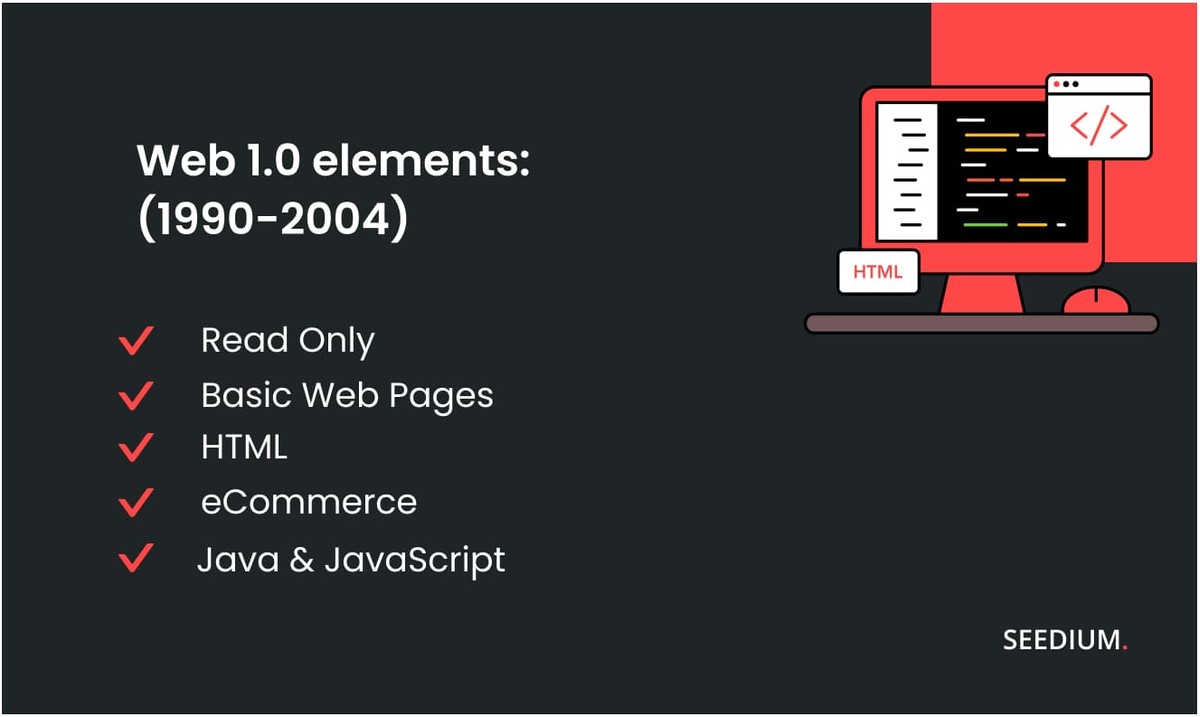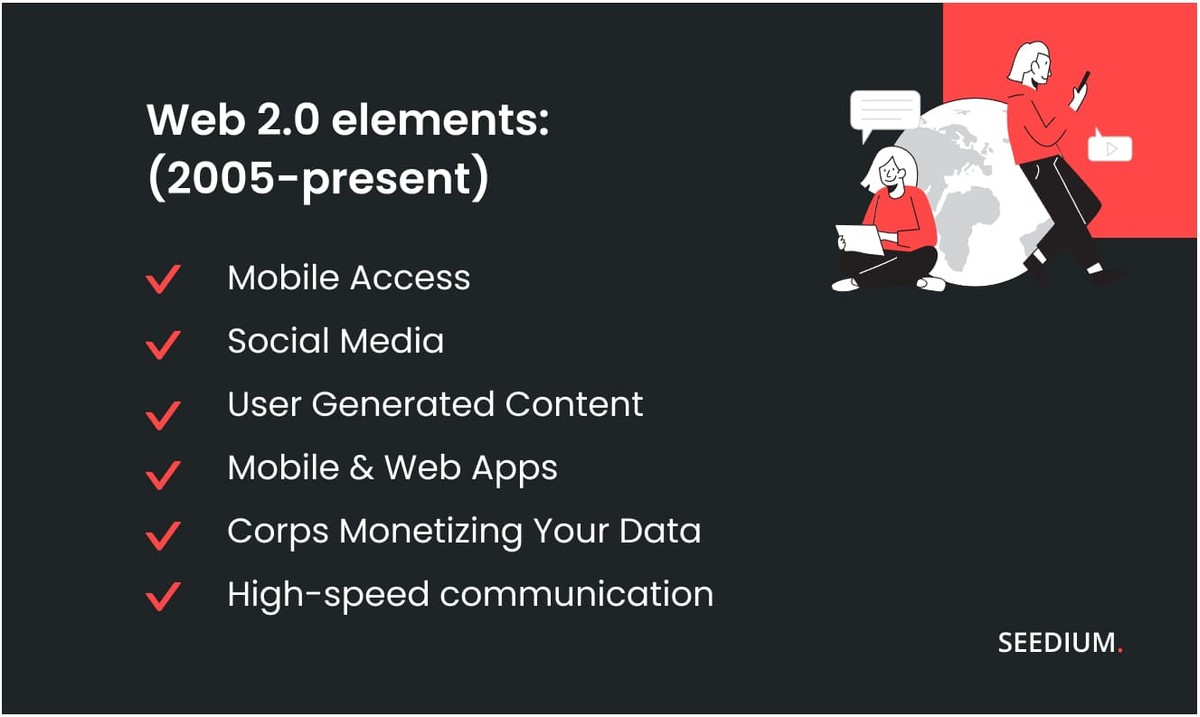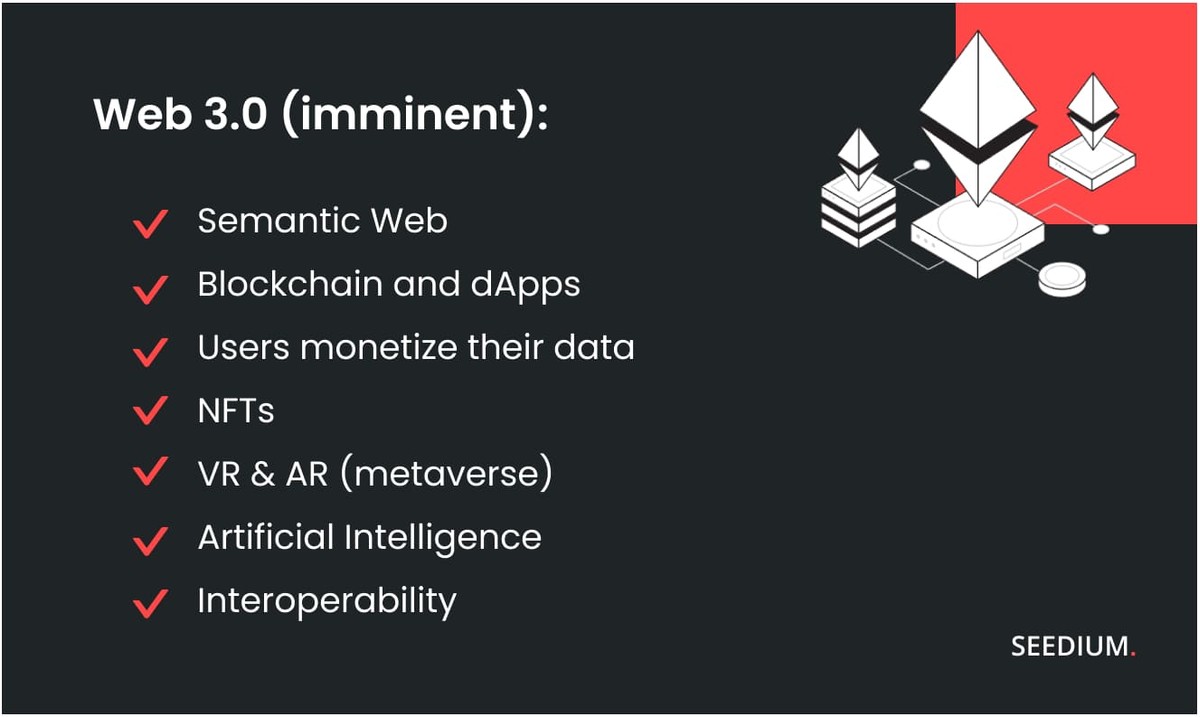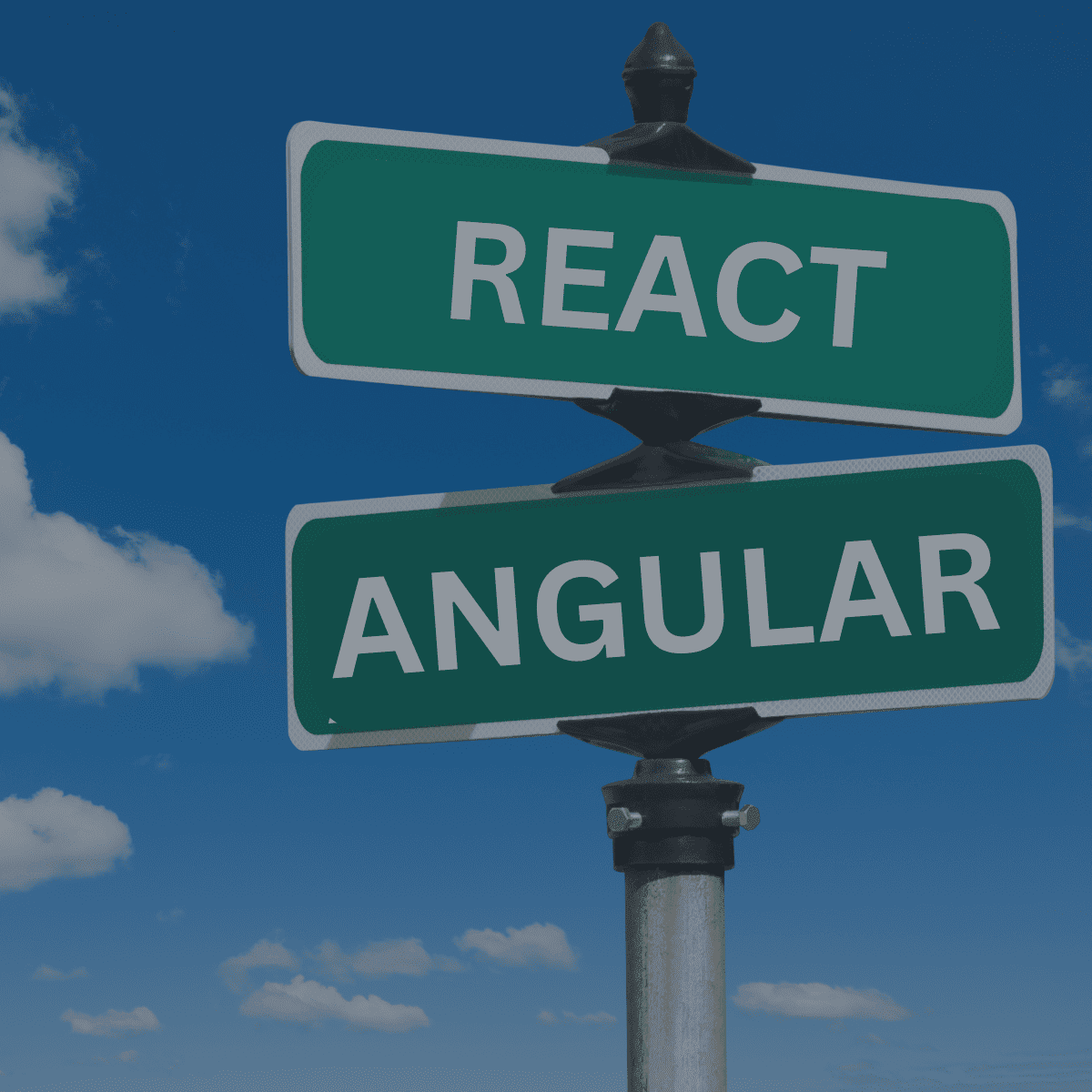The Web 3.0 era is coming, and more and more companies, developers, and users are discussing the third "generation" of the Internet. However, most still do not have a clear understanding of what to expect from him. We will help everyone understand this, even those who are far from the latest trends in the world of web technologies.
In this article, we will consider the history of web evolution, analyze the main differences of each web era, and try to understand the directions of web technologies' development.
Web 1.0 (1990-2004)
The Web 1.0 period began with the appearance of web browsers such as Netscape Navigator. It consisted of static web pages stored on servers.
Sir Timothy John Berners-Lee, a British specialist in computer science, the leading developer of the World Wide Web, and the author of the concept of the Semantic Web characterized Web 1.0 as a read-only web. The websites of that time were built on the basis of static HTML pages and were similar to newspaper columns with solid text and a few images. Users could not evaluate the content of the pages or contribute to the development of the resources. Social interactions were limited to simple messengers and forums.

As the popularity and use of Web 1.0 grew, innovation and development expanded the range of web pages by adding dynamic and interactive features, though in small amounts. However, Web 1.0 did not provide any opportunities for user creativity.
Web 2.0 (2005 - present)

In Web 2.0, there is a change in the approach to using the Internet and interacting with users. This happened due to three main changes, namely:
- Mobile Phones. Until about 2007, people mostly accessed the Internet from their desktops for a couple of hours, but thanks to smartphones, they stay connected around the clock.
- Social networks. They allowed posting content not only to webmasters and website owners but also to simply Internet users.
- Cloud technologies. In the past, companies had to buy and maintain expensive servers themselves to host their sites. Now they can be rented from Amazon, Google, and Microsoft, making it cheaper to start a business.
Web 2.0 allowed millions of people around the world to view user-generated content virtually instantaneously. Users started using Facebook, and YouTube, writing posts and uploading photos, and entering millions of search queries on Google.
This involvement has led to the daily use of many platforms and web services, where users actively share personal information with many sites, register accounts, enter bank card details, make purchases, and more.
So the question appears: if Web 2.0 is so good, why was there a need to create Web 3.0?
Disadvantages of Web 2.0
First of all, Web 2.0 maintains centralization. This limits the freedom of expression of users, and this does not have the best effect on the quality of the content as a whole.
Another disadvantage of Web 2.0 is the transfer of confidential data from service users. Many of them require users to provide their personal data and leave it on the site. In fact, personal data is stored on content sites, and this data can be hacked. Decentralized networks do not have this problem.
Thus, Web 2.0 has obvious disadvantages that have to be dealt with and which are very annoying to users. Among these:
- relatively low service speed (even taking into account the development of mobile networks);
- monopolization of the market, and, as a result, censorship and security holes;
- violation of privacy and providing personal data of users to third parties;
- a large number of points of failure due to centralization;
- duplication and non-uniqueness of content.
That is why there was a need to create a new format for the World Wide Web - Web 3.0
Web 3.0: Definition and Key Components

Web 3.0 is the Internet of the new generation, which is based on the principles of decentralization of information and resources, and which will help to redistribute them among users. In other words, Web 3.0 processes information with artificial intelligence and machine learning, without relying on centralized data sharing platforms. Web 3.0 users participating in Governance protocols own a stake (token or cryptocurrency) that represents their ownership in the decentralized network. All holders of control tokens have the right to vote on changes to the network.
Modern Web3 applications have such attributes as DAO, cryptocurrencies, blockchain and decentralized data storage systems, the Internet of Things, metaverses, NFTs, and other technologies.
Semantic web
The point of this concept is to make all information on the network readable and "understandable" for machines. To implement the semantic web of all information in the network, it is necessary to assign metadata—information about information. Thanks to metadata, the algorithm can "understand" the context, build logical relationships between pieces of information, and form associations, almost like people.
The key element in the implementation of the Semantic Web is a set of Resource Description Framework (RDF) specifications from the W3C. RDF is a model of information description through special machine-understandable statements - triplets. A triplet consists of three parts: "subject", "predicate" and "object".
Machine learning
This is a system of methods that computer algorithms use to solve problems without direct instructions. The algorithm is trained to perform a specific task. He analyzes a set of data and independently identifies patterns in them, which he then uses in the performance of the task.
The IBM Watson system and the Tensorflow library from Google Brain are examples of popular initiatives in the field of machine learning and AI.
Internet of Things (IoT)
It describes a network of many devices that are equipped with sensors and connected to the Internet, interact with each other, and can be controlled remotely. The Internet of Things connects the world of web applications with the world of "smart" physical objects: toasters, cars, houses, etc.
Smart home technologies such as locks and thermostats with remote control are an element of the Internet of Things. According to TechJury forecasts, by 2025 the number of devices connected to the Internet of Things will exceed 64 billion.
For Web 3.0, Internet of Things devices are not only network access terminals but also permanent sources of data about the physical world. Thus, detailed and objective summaries of the routes of human movement in traffic jams with reference to time and geography are accumulated in the network.
With advanced possibilities for searching and analyzing information on the network, such data can be used in any way: in urban planning, statistics, or searching for the best route to the office. On the other hand, when control over big data is centralized, the risk of information leakage increases. And the interests of such a structure may not coincide with the interests of the community.
Blockchain
This is the technology that forms the transaction register of various cryptocurrencies, as well as being used in financial operations, user identification, and cyber security. It looks like a database in the form of a chain of blocks of information that are distributed among different nodes of a computer network and connected in such a way that it is impossible to secretly falsify individual pieces of information. Because when making changes to one block, all changes will need to be made and all the following in the chain.
Since blockchain-based systems are decentralized, they can solve the problems of web service opacity, network censorship, and personal data privacy. Additionally, modern blockchains allow anyone to deploy nodes and manage them.
Decentralized Autonomous Organizations
DAOs are online organizations owned and operated by their members. A typical DAO makes decisions by group voting during certain election periods. Owning your own DAO token is generally a way to join the community and participate in decision-making and governance. Smart contracts are used to fulfill the terms of membership in the DAO.
There is no traditional hierarchy in DAO. They work transparently, according to the rules prescribed in the code. In essence, DAOs are similar to already existing forms of organizations.
Blockchain can be considered the basic infrastructure for building a DAO. In other words, a decentralized autonomous organization is an application deployed on top of an existing network. Some consider Bitcoin the first rudimentary open-source DAO, where miners and developers maintain the integrity of the system.
Ethereum is currently the most popular blockchain for running DAOs, but the development of alternative L1 networks like Solana and NEAR may change the situation in the future.
Metaverse
A metaverse is a combination of Web 3.0, virtual reality, and augmented reality that uses many decentralized technologies, such as blockchain, to offer a parallel universe to its users.
Web 3.0 should become a decentralized basis for the creation and existence of virtual communities with their own tokens, cryptocurrencies, and rules. The metaverse will unite these spaces into a single world with the possibility of cryptocurrency conversion, token exchange, communication, work, business, and entertainment. Most importantly, the metaverse is not controlled or owned by any single company.
Advantages of Web 3.0
To summarize the above, in the first version of the Internet, users received information to read. In the second, users can interact with the network - communicate with other people, order goods and services, and use search. Web 3.0, with the help of artificial intelligence and machine learning, will study the user in order to best solve his problem. In general, Web 3.0 offers a number of advantages.
- Ownership of content and personal information belongs to you. Big companies and even governments will no longer be able to use your data or restrict your online activities.
- You can search for information faster because there is no paid advertising. You get only what you are looking for.
- In the blockchain network, you do not need to enter a login, password, or email address. All you need is to create your wallet on the blockchain and interact with the network from your smartphone or laptop.
- The cross-platform ability of software to work on different platforms saves time and allows you to enjoy digital assets on all platforms.
- You can be served seamlessly thanks to blockchain technology. Information is stored on distributed nodes, not on a single server. Even if one of the blocks is attacked by hackers or fails, the others keep working and keep copies of the data.
- You can get paid for any online activity. All your content, including photos, videos, and images, is tokenized. A free-standing token, or NFT, is a digital construct that proves authenticity and ownership. You can also earn by viewing ads, staking, creating your own programs, or investing in the crypto projects of other users.
- Decentralization. Services and applications will be DAOs (decentralized autonomous organizations) without a CEO or board of directors. The editorial policy is determined by all users of the blockchain.
Switching from Web 2.0 to Web 3.0: Main Challenges
At the moment, Web 3.0 is at the stage of formation and has a very fragmented structure. Even those applications that today are considered decentralized do not actually store all data in the blockchain yet.
The process of switching from Web 2.0 to Web 3.0 involves creating new frameworks that connect people with digital services. The main technical problem today is the interoperability of blockchains—the ability to transfer assets from one blockchain to another, from one platform to another. Until this problem is solved, it will not be possible to talk about the full implementation of Web 3.0.
Projects such as Celer cBridge, Multichain (formerly known as Fantom Anyswap), Wormhole, and other companies developing bridges are working on creating cross-chain solutions that allow blockchains to interact with each other between blockchains.
Final Thoughts
The Internet has changed a lot in two decades. Looking back at the development of the Internet, it is clear that each year, web technology is becoming more deeply integrated into our business, social interaction, and everyday lives. And currently, there are still many problems: the centralization of resources in the hands of web giants, systematic violations of data privacy, as well as problems with access to content and security.
Next-generation web technologies will assist in resolving these issues and enabling fruitful and confidential internet collaboration. Ideally, Web3 is free from censorship and restrictions, as well as having an effective business model without the use of hierarchical structures and traditional financial instruments.
And although the implementation of Web 3.0 is indeed associated with some problems and may take time, switching to Web 3.0 is already inevitable.
Check out our web development services and contact us to start a project.





